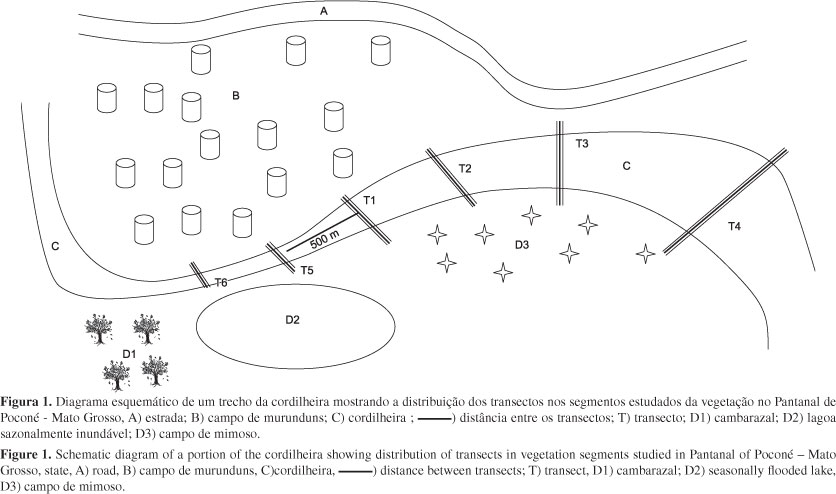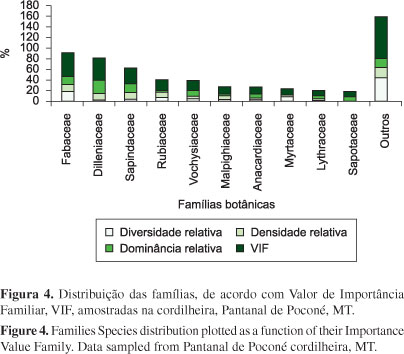In wetlands as the Pantanal, the floristic composition and community structure respond primarily to the flood pulse and, in order to understand the species that enter this biome, these plant communities need to be floristically and structurally described. Therefore, the objectives of this paper are characterize floristic composition and vegetation structure on a cordilheira (paleolevees), in the Pirizal region, Nossa Senhora do Livramento County, MT; define the type of vegetation and determine whether there is a greater floristic similarity degree between the object of this study and other cerrado s.s. or cerradão areas in Central Brazil. 102 contiguous plots of 20 x 5 m were distributed systematically arranged in six transects towards edge-center-edge cordilheira, thus having a total area of 1,02 ha. For sampling purposes, only individuals with entire stem DBH > 3 cm including dead trees and palms. 82 different species of trees and shrubs were identified, which in turn were spread in 63 genera, 32 families and one unidentified species. Being 37 species characteristics of areas with cerradão, 19 of cerrado s.s., nine distributed both in areas of cerradão and in cerrado s.s., and 10% belonging to the Pantanal wetland environments. Comparing the studied area with other communities across the DCA, the results indicated the existence of two floristic groups relatively distinct, the first formed by areas composed of cerrado s.s. and the second by cerradões areas. Among the areas formed by cerradões, there was a separation of the sampled areas in the region of the Pantanal (wetlands) those occurring elsewhere in the Centro-Oeste (dry land). The vegetation on cordilheira showed greater floristic and structural relationship with cerradões than with cerrado s.s. of west center region of Brazil, and may thus be characterized as a vegetation type of cerradão. The savannas of the Pantanal had a lower floristic relationship with other regions of the Centro-Oeste, this floristic heterogeneity may be related to the flood pulse which acts as a filter for most species in other areas of the Planalto Central.
florist comparasion; cordilheira; cerradão; cerado sensu stricto








